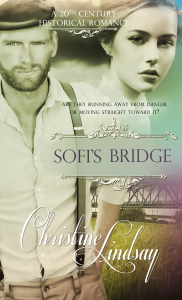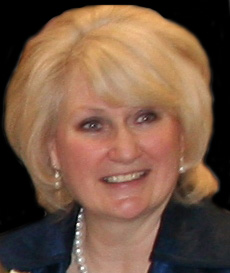Today, we welcome Christine Lindsay to the Story behind the Story. The research she did for her new release, Sofi’s Bridge is just fascinating. First, here’s a little bit about the book.
 Seattle Debutant Sofi Andersson will do everything in her power to protect her sister who is suffering from shock over their father’s death. Charles, the family busy-body, threatens to lock Trina in a sanatorium—a whitewashed term for an insane asylum—so Sofi will rescue her little sister, even if it means running away to the Cascade Mountains with only the new gardener Neil Macpherson to protect them. But in a cabin high in the Cascades, Sofi begins to recognize that the handsome immigrant from Ireland harbors secrets of his own. Can she trust this man whose gentle manner brings such peace to her traumatized sister and such tumult to her own emotions? And can Neil, the gardener, continue to hide from Sofi that he is really Dr. Neil Galloway, a man wanted for murder by the British police? Only an act of faith and love will bridge the distance that separates lies from truth and safety.
Seattle Debutant Sofi Andersson will do everything in her power to protect her sister who is suffering from shock over their father’s death. Charles, the family busy-body, threatens to lock Trina in a sanatorium—a whitewashed term for an insane asylum—so Sofi will rescue her little sister, even if it means running away to the Cascade Mountains with only the new gardener Neil Macpherson to protect them. But in a cabin high in the Cascades, Sofi begins to recognize that the handsome immigrant from Ireland harbors secrets of his own. Can she trust this man whose gentle manner brings such peace to her traumatized sister and such tumult to her own emotions? And can Neil, the gardener, continue to hide from Sofi that he is really Dr. Neil Galloway, a man wanted for murder by the British police? Only an act of faith and love will bridge the distance that separates lies from truth and safety.
Christine, tell us a little bit about your research into this book.
A nasty storm really can blow a steel bridge down and crumple it like tinfoil.
For Sofi’s Bridge I enjoyed researching train disasters. The Tay Bridge tragedy in Dundee Scotland 1879 was a sad one, but full of great details that helped develop the mystery in my novel. The noted Sir Thomas Bouch designed the bridge that would cross the deep watery span of the Firth of Fourth, a good 2.75 miles wide.
Bouch had success with this design for a viaduct in Wales, and the lattice girders, cast iron columns, and wrought iron cross bracings were as good a quality as was used to build the Crystal Palace in England. Looking back through, after the tragedy, the designer’s math was faulty. No one the night of the storm thought they would soon lose a train of 6 cars and the 75 lives on board.
The bridge seemed fine when it first opened in 1878, and a year later Queen Victoria crossed the bridge on her way home to England after her summer holidays at Balmoral Castle. But a mere 6 months later, winds in Dundee rose to 75 mph, gusting to 80 mph, and blew directly at right angles with the bridge.
At [7:13] the train slowed to enter the bridge and then built up speed to cross the almost 3 mile span of water. The signalman at the far-off bridge abutment saw the train enter the bridge, but after a while, with the howl of the gale and the distance with the train so far out on the long spanning bridge, the signal man could no longer hear the train. For a brief moment he though he saw a bright flash of light when the train was close to the middle of the waterway. Then total darkness.
A while later, the signal man could not believe reports that the train had not arrived on the other side of the bridge. Divers later discovered the train was still encased with the girders in the depths of the Firth of Fourth.
The wind, plus the train, equaled the collapse of the Tay Bridge. This mathematical dilemma is the foundation to some of the mystery in Sofi’s Bridge.
Investigations into the Tay Bridge disaster discovered a number of overall structure issues, but the greatest element was that the designer had not considered the extra weight of wind-loading. The bridge had been designed against a wind loading of 20 pounds per square foot (psf), the usual margin of safety for this era. However, the designer had not made allowances for extra wind loading like that of the storm of December 1878 which was more like 40 psf.
Here is a short scene in Sofi’s Bridge where she attempts to show this math to the townspeople in the fictional town of Orchard.
~*~
A councilman set up the easel, and Mayor Frank smiled as he passed a piece of chalk to Sofi.
Taking a deep breath, she swept her arm and drew a strong, fluid arc across the board. Quickly sketching in the steep cliff sides, she added the triangular shapes of trusses, and the bridge came to life. With short jabs of chalk, she marked crisscrosses at various sections. “Here, gentlemen, is where the steel is too thin. This will escalate stress in these thinner sections.” She wrote a series of formulas on the side of the board and underscored them.
“It’s not just the dead load of its own weight that the bridge must sustain, but the tonnage of locomotives. Plus, the wind shear factor in these canyons will slam against the flat sides of railcars, acting in a similar manner as wind filling canvas sails on the surface of water—”
“How strong were the winds today?” One of the railroad dignitaries asked.
“Forty miles per hour,” another man volunteered.
“Which means the wind shear factor is…” Sofi scratched the chalk on the board and ran the calculation. “Which means on days like today.” She quieted her voice. “The bridge as it now stands will collapse. Maybe not today, but one day. Lives could be lost.”
To Read the first chapter of Sofi’s Bridge for free click HERE.
 Christine Lindsay is the author of multi-award-winning Christian fiction. Tales of her Irish ancestors who served in the British Cavalry in Colonial India inspired her multi-award-winning trilogy Twilight of the British Raj, Book 1 Shadowed in Silk, Book 2 Captured by Moonlight, and explosive finale Veiled at Midnight.
Christine Lindsay is the author of multi-award-winning Christian fiction. Tales of her Irish ancestors who served in the British Cavalry in Colonial India inspired her multi-award-winning trilogy Twilight of the British Raj, Book 1 Shadowed in Silk, Book 2 Captured by Moonlight, and explosive finale Veiled at Midnight.
Christine’s Irish wit and use of setting as a character is evident in her contemporary romance Londonderry Dreaming and newest release Sofi’s Bridge. A busy writer and speaker, Christine and her husband live on the west coast of Canada. Coming August 2016 is the release of Christine’s non-fiction book Finding Sarah—Finding Me: A Birthmother’s Story.
SOCIAL MEDIA LINKS:
Please drop by Christine’s website www.ChristineLindsay.org or follow her on Amazon on Twitter. Subscribe to her quarterly newsletter, and be her friend on Pinterest , Facebook, and Goodreads
Christine is giving away an ebook copy of Sofi’s Bridge. Follow the directions below to enter.
a Rafflecopter giveaway
Thank you for joining us, Christine!

I’ve only traveled short distances by train. Love the plot of this one…thanks for the giveaway.
Thanks Nancy, so pleased you like the plot for this. I find travelling by train very romantic.
No I haven’t traveled by train. It would be a wonderful adventure to do so.
You would love it. A slower pace, but I love sleeping on a train and eating in the dining car. The train is a big part of the experience.